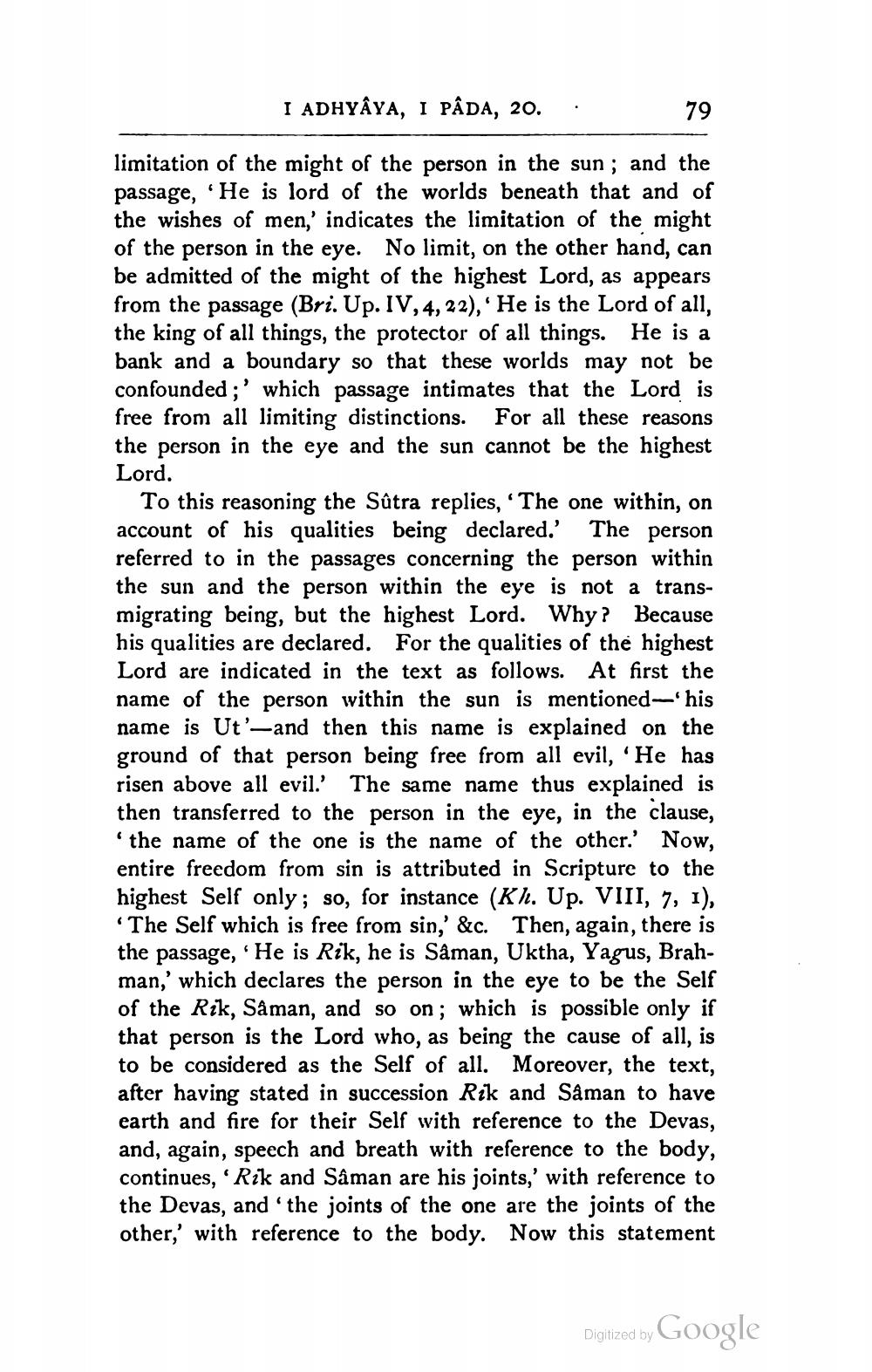________________
I ADHYÂYA, I PÂDA, 20..
79
limitation of the might of the person in the sun ; and the passage, He is lord of the worlds beneath that and of the wishes of men,' indicates the limitation of the might of the person in the eye. No limit, on the other hand, can be admitted of the might of the highest Lord, as appears from the passage (Bri. Up. IV,4,22), He is the Lord of all, the king of all things, the protector of all things. He is a bank and a boundary so that these worlds may not be confounded;' which passage intimates that the Lord is free from all limiting distinctions. For all these reasons the person in the eye and the sun cannot be the highest Lord.
To this reasoning the Sûtra replies, 'The one within, on account of his qualities being declared. The person referred to in the passages concerning the person within the sun and the person within the eye is not a transmigrating being, but the highest Lord. Why? Because his qualities are declared. For the qualities of the highest Lord are indicated in the text as follows. At first the name of the person within the sun is mentioned his name is Ut'-and then this name is explained on the ground of that person being free from all evil, 'He has risen above all evil.' The same name thus explained is then transferred to the person in the eye, in the clause, 'the name of the one is the name of the other.' Now, entire freedom from sin is attributed in Scripture to the highest Self only; so, for instance (Kh. Up. VIII, 7, 1), *The Self which is free from sin,' &c. Then, again, there is the passage, 'He is Rik, he is Sâman, Uktha, Yagus, Brahman,' which declares the person in the eye to be the Self of the Rik, Såman, and so on; which is possible only if that person is the Lord who, as being the cause of all, is to be considered as the Self of all. Moreover, the text, after having stated in succession Rik and Sâman to have earth and fire for their Self with reference to the Devas, and, again, speech and breath with reference to the body, continues, 'Rik and Saman are his joints,' with reference to the Devas, and the joints of the one are the joints of the other,' with reference to the body. Now this statement
Digitized by Google




